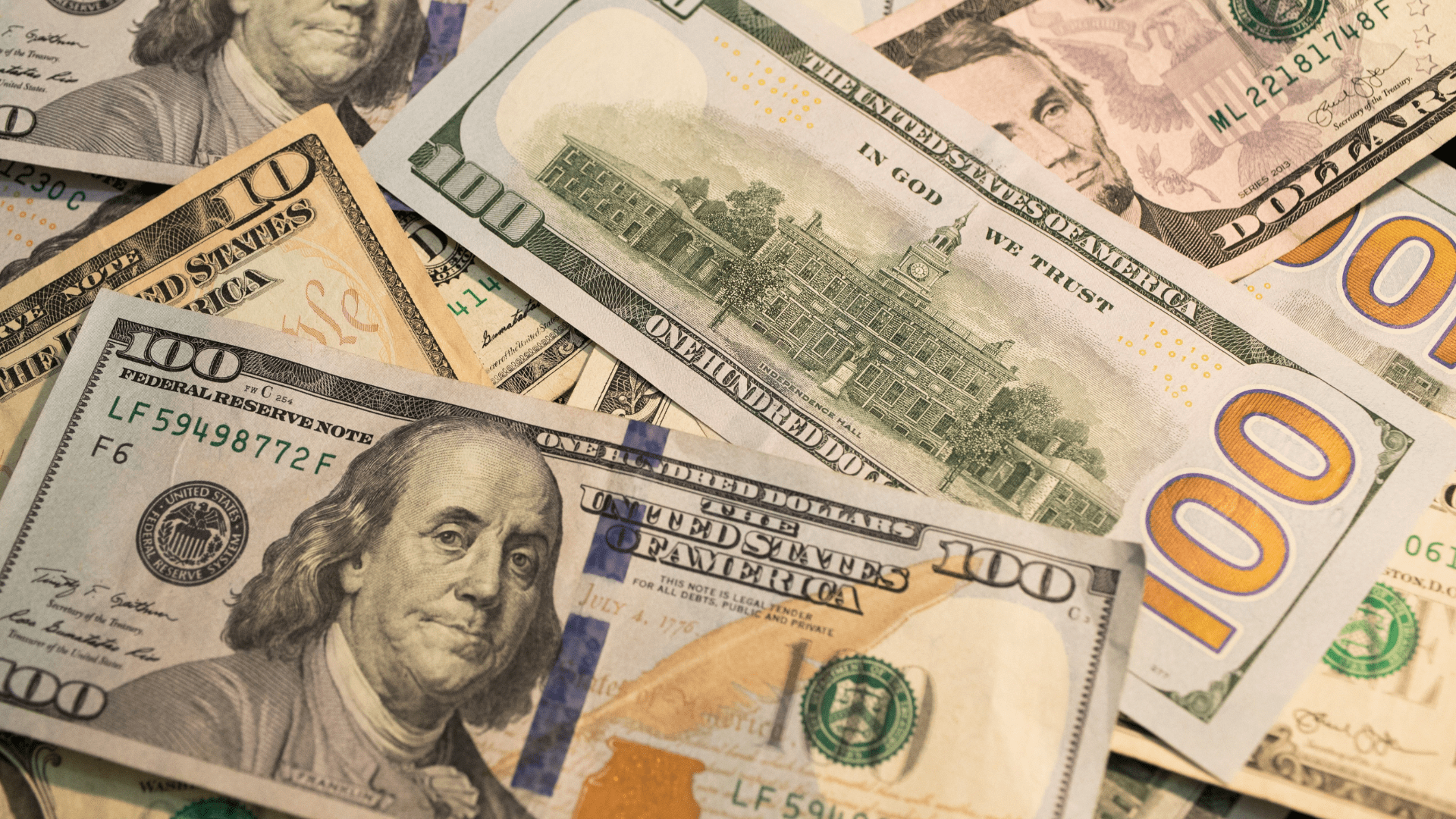Chris Kamykowski, CFA, CFP®, Head of Investment Strategy and Research
“That will be 20 bucks.”
Ever wondered why people say “20 bucks” in reference to a transaction today? At one point, the “buck” served as a bona fide way of exchanging value or communicating a price for a good or service in the U.S. “Buck” is an informal reference to $1 that may trace its origins to the American colonial period when deerskins (buckskins) were commonly traded for goods. Once the American dollar replaced animal skins as a way to pay for goods, the term “buck” remained as a slang term for one dollar.
Today the “buck,” or U.S. dollar, is running into concerns over its “looming” demise as the dominant global reserve currency due to recent weakness (the value of the dollar declining relative to other currencies), a spate of potential competitors, and evolving world order dynamics. As U.S.-based investors, a weaker dollar and losing reserve currency status certainly sound like fundamental threats to one’s portfolio, but how concerned should one really be? Answering that question requires a bit of understanding of what the reserve currency status means in the first place, so let’s first start with some basics to set the stage, and then we’ll delve a bit more into the concerns and potential mitigating factors.
Brief Background
First off, let’s start by defining a global reserve currency:
A global reserve currency is a foreign currency that is held in significant quantities by central banks or other monetary authorities as part of their foreign exchange reserves. Seen as a safe-haven currency, a reserve currency is considered very liquid, trusted, and cost-effective, to allow for international transactions. It is supported by the country’s domestic economy size, degree of impact on international trade, financial markets ease of access and breadth, attractiveness as a currency peg, and overall economic policies.1
Throughout time, there have been various currencies which have risen to reserve currency status, including the Arabian dinar, Dutch gilders and the Spanish dollar, to name a few. These economies, and therefore their currencies, served at one time as major hubs for trade and/or exploration. More recently, the British pound sterling claimed dominant reserve currency status from the 1800s to the early 1900s, given Britain’s widespread footprint globally and economic influence as an industrial powerhouse and dominant player in global trade. After World War I and the devastation inflicted on the economies of the United Kingdom and broader Europe, the U.S. dollar was rapidly thrust forward as a currency of choice, due to the U.S.’s economic strength, rule of law, position as a global exporter, and importantly, ability to provide credit to Europe as it rebuilt.
Further dominance of the U.S. dollar followed World War II, as the U.S. became a global superpower with a strong military spread across the globe and economic supremacy. With the establishment of the Bretton Woods system in 1944 the U.S. dollar was linked to gold and 44 signatory countries pegged their currency to the US dollar. This agreement lasted until the early 1970s, when the Bretton Woods system was dismantled and currencies like the dollar were allowed to float unattached to gold. Since then, the US dollar has still maintained its privileged status and dominance as a global reserve currency. As the table below shows, while the level of global currency reserves has dwindled, the U.S. dollar still dominates, making up nearly 60% of official foreign exchange reserves2.

Perceived Threats to US Dollar Dominance
Recent news and trends have brought forward threats to the dollar’s dominance as a global reserve currency. Some are well-tread concerns, while others are just now percolating into investors’ awareness. Here are a sample of major concerns:
- Weaponization of Dollar within Global Financial Markets
- This is not exactly new as countries such as Iran have been sanctioned in the past from access and utilization of the dollar-based trading system. However, the scale and magnitude of the sanctions imposed on Russia, following the invasion of Ukraine, marked an escalation in the weaponization of currencies, as assets were frozen and access to payment and settlement systems denied. Access to financial systems such as SWIFT is critical for countries to allow for the flow of capital and trade; however, the West’s recent actions against Russia gives other countries distinct incentives to diversify their foreign currency reserves and limit consequences of running afoul of U.S. policy.
- China’s Influence on Evolving Global Economic Relationships
- With China cementing itself as a global economic power second only to the U.S., it has used this position to alter bilateral trading relationships which eliminate the need for the use of U.S. dollars. A recent example is a deal with Brazil – a major import/export partner of China – whereby trade and financial transactions will allow exchanging Chinese yuan for Brazilian real, cutting out the need for the U.S. dollar. Furthermore, discussions are ongoing between China and Saudi Arabia to transact in oil with the yuan instead of the dollar.
- U.S. Fiscal Situation (Debt & Deficits)
- Extraordinary amounts of fiscal spending and borrowing – especially in the wake of the recent pandemic – has put the U.S.’s fiscal situation in a more untenable position, with debt-to-GDP levels at 120% (Q4 2022)3. Higher interest rates are also impacting the amount required to service interest rate payments. On top of this, a debt ceiling debate looms as we enter the summer, one which threatens to potentially upend the credit rating of the U.S. as politicians tread a dangerous path to a resolution and compromise.
- This all matters because most of the currency reserves held by foreign nations is via holdings of U.S. Treasury debt. Shifts away from holding U.S. debt on the basis of concerns over its fiscal situation could impact the level of reserves held in dollars by foreign countries.
- Digital Currencies
- While investors have seen the distinct volatility of cryptocurrencies, one of the touted proposed uses of cryptocurrencies is to circumvent the need for central bank issued fiat currencies, such as the dollar. Though cryptocurrencies seem to be, at minimum, years away from broader adoption to such an extent they replace fiat currencies, they do remain a threat to the point that central banks are seeking to understand how they may issue their own digital currencies.
Factors Favoring the U.S. Dollar Reserve Status
The threats noted above are credible and have varying degrees of support, but the U.S. still operates from a position of strength that limits the pace of uptake in other global reserve currencies. Key items are:
- Primary Global Reserve Currency
- As noted previously, the dollar maintains a privileged status as THE most favored global reserve currency. Its next competitor, the euro is a third of the U.S.’s portion of global reserves and a sizable trading partner for many countries; but in contrast to the U.S. Treasury market, it does not have a deep, uniform euro-denominated bond market.
- Rule of Law and Investor Protections
- Often taken for granted, the US benefits from a strong legal tradition and multiple levels of investor protections which inform the perceived “safety” of investing in the U.S. This is especially true for foreign investors who may face much more difficult hurdles domestically due to authoritarian regimes, lack of a consistent legal tradition, and corruption.
- Use of Dollar in Global Transactions
- While the dollar’s dominance in transactions may be weakening as countries look to conduct trade in their own currencies, foreign transactions remain overwhelmingly dominated by the U.S. dollar4, making it the most efficient, liquid and transparent market in the world. We may see the percent transacted in U.S. dollars decline over time, but there will be economic costs to not using the U.S. dollar.

- Yuan’s Peg to the Dollar
- Despite its ongoing efforts to supplant the U.S. in a variety of ways as a superpower, China allows the yuan to float within a very strict band of +/- 1% to the U.S. dollar. This means markets do not determine the true value of the yuan like other currencies. To effect this, China must buy U.S. dollars (via US Treasuries) and sell yuan to keep it from appreciating and hurting the competitiveness of Chinese exports. There are economic consequences to China in allowing the yuan to float freely which are not trivial.
What does this mean for U.S. investors?
The dollar’s status as a global reserve currency is not governed by some pre-ordained order from above, nor is it something that is guaranteed; history is littered with currencies that were the favored instruments for transactions, only to become shadows of themselves. However, our rule of law, open financial system, transparency, economic might and dynamic capital markets have served us well in establishing the U.S. dollar at the head of the currency order over the last 100 years. This, plus opportune moments in history and a strong military, have provided the U.S. dollar the ability to rapidly supplant former reserve currencies. Nevertheless, its status is not a foregone conclusion, and though it has many winds at its back, it still requires guarding the dollar’s position appropriately.
Purely from a patriotic point of view, it may strike a chord with US investors when one observes the dollar declining in its value, as it has recently. Yet, this does not mean that losing the reserve status or even simply a weakening in the U.S. dollar spells the demise of the U.S. One should be careful not to mistake dollar weakness for permanent dollar decline. We need only look at the United Kingdom and their recent Brexit vote in 2016 where the pound fell sharply in the aftermath; while certainly painful, the United Kingdom remains a leader in the global world order.

We do not perceive the dollar’s recent decline from post-pandemic highs as a good or bad thing necessarily, given, at Moneta, we promote a globally diversified portfolio for clients. With the Fed appearing to be decelerating its rate hiking regiment, a weaker currency could provide a tailwind for foreign currencies to gain a foothold on the dollar and strengthen. This in turn could improve returns generated by non-U.S. dollar holdings, such as international and emerging market equities.
Will the dollar be replaced? It is very unlikely to happen in our lifetimes, but sometime in the distant future, it is certainly quite possible. When and how fast would the global financial markets diversify meaningfully away from it are other questions that go far beyond anyone’s ability to predict. For now, the “buck” hasn’t stopped.
Sources
1 Reserve Currency Definition: https://en.wikipedia.org/wiki/Reserve_currency
2 International Monetary Fund: Currency Composition of Official Foreign Exchange Reserves (COFER), International Financial Statistics; https://data.imf.org/
3 U.S. Office of Management and Budget and Federal Reserve Bank of St. Louis, Federal Debt: Total Public Debt as Percent of Gross Domestic Product [GFDEGDQ188S], retrieved from FRED, Federal Reserve Bank of St. Louis; https://fred.stlouisfed.org/series/GFDEGDQ188S
4 Bank of International Settlements: https://stats.bis.org/statx/srs/table/d11.3
Definitions:
The US Dollar Index measures the US dollar against six global currencies: the euro, Swiss franc, Japanese yen, Canadian dollar, British pound, and Swedish krona.
DISCLOSURES
© 2023 Advisory services offered by Moneta Group Investment Advisors, LLC, (“MGIA”) an investment adviser registered with the Securities and Exchange Commission (“SEC”). MGIA is a wholly owned subsidiary of Moneta Group, LLC. Registration as an investment advisor does not imply a certain level of skill or training. The information contained herein is for informational purposes only, is not intended to be comprehensive or exclusive, and is based on materials deemed reliable, but the accuracy of which has not been verified.
Trademarks and copyrights of materials referenced herein are the property of their respective owners. Index returns reflect total return, assuming reinvestment of dividends and interest. The returns do not reflect the effect of taxes and/or fees that an investor would incur. Examples contained herein are for illustrative purposes only based on generic assumptions. Given the dynamic nature of the subject matter and the environment in which this communication was written, the information contained herein is subject to change. This is not an offer to sell or buy securities, nor does it represent any specific recommendation. You should consult with an appropriately credentialed professional before making any financial, investment, tax or legal decision. An index is an unmanaged portfolio of specified securities and does not reflect any initial or ongoing expenses nor can it be invested in directly. Past performance is not indicative of future returns. All investments are subject to a risk of loss. Diversification and strategic asset allocation do not assure profit or protect against loss in declining markets. These materials do not take into consideration your personal circumstances, financial or otherwise.







